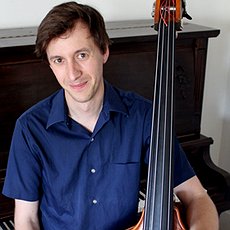The classical guitar is one of the most beautiful sounding instruments. It can have a warm rich tone and can be incredibly enjoyable to play even at the beginner level. The classical guitar is able to produce a mellow tone when picked over the fret-board and a contrasting metallic tone when picked or strummed near the bridge. There is a massive amount of classical guitar repertoire to learn for classical guitar lessons.
CLASSICAL GUITAR LESSONS
A classical guitar or 'Spanish Guitar' is a wooden guitar
that has nylon and plastic strings. It has a smaller body than some acoustic
guitars which generally have steel strings. The neck on a classical guitar is
usually flatter and wider than an acoustic guitar. A classical guitar typically
has nineteen frets, twelve of which are clear of the body, unlike the acoustic
guitar which generally has eighteen to twenty frets, fourteen of which are
clear of the body.
The origins of the classical guitar are difficult to pin
point. Images of 'guitar like' instruments can be seen from ancient Greece,
Turkey, Egypt, and Arabia. We do know that the classical guitar derived from
the Spanish fifteenth and sixteenth century stringed instruments called the
Vihuela and Gittern. The Vihuela and Gittern then evolved into the seventeenth
and eighteenth century Baroque guitar and Romantic guitar. The Baroque guitar
and Romantic guitar then evolved into the nineteenth century modern classical
guitar. Originally, the strings on all of these instruments were made of gut.
Holding a classical guitar can be tricky for beginners in
their private classical guitar lessons. The classical guitar is supported with
either your left or right leg in an elevated position supported by a foot rest
depending on which hand you pick or strum with. This places the classical
guitar at a peculiar angle for playing which is generally unique to classical
guitarists. Playing the classical guitar requires your left or right hand to
pick or strum the strings near the back of the sound hole, bridge, or over the
fret-board depending on the tone you want to achieve.
Some of the most famous classical guitar composers include:
Ferdinando Carulli, Fernando Sor, Mauro Giuliani, Matteo Carcassi, Dionisio
Aguado, John Dowland, Gaspar Sanz, Niccolo Paganini, Julian Arcas, Johann
Sebastian Bach, Napoleon Coste, Enrique Granados, Johann Kaspar Mertz, Isaac
Albeniz, Miguel Llobet, Francisco Tarrega, Agustin Barrios, Heitor Villa-Lobos,
Andres Segovia, Leo Brouwer, and Carlo Domeniconi.
Beginner Classical Guitar Lessons
The classical guitar is an excellent instrument for a
beginner. It's quite a diverse instrument and is capable of playing both melody
and harmony. With the right classical guitar teacher, students can sound good
after only a few lessons. Our beginner classical guitar lessons in Toronto at
Neighbour Note are fun, challenging, and eclectic. Students are quickly
introduced to the parts of the classical guitar during the first lesson. From
there, we like to begin by focusing on the picking or strumming hand with
simple exercises that focus on proper technique. Open string arpeggios are a
great place to start. We then move on to the fret-board hand by playing single
finger chords. This allows students to focus on correct finger, hand, and wrist
placement. From there a two or three finger single string chromatic pattern
exercise works well for stretching out the hand and fingers. Some students are
able to stretch a four fret span by using all four fingers for this exercise.
It all depends on how young the student is. Some students are really young and
have small hands and fingers. For smaller students it is best to stick to two
and three frets for this exercise until their hands and fingers grow.
The main goal of learning classical guitar at Neighbour
Note is to become as relaxed as possible when playing. Short meditation like
exercises are extremely valuable. They relax the body and let it do what needs
to be done, namely playing in a relaxed comfortable state of mind and body. A
good way to get started is to pick some open string arpeggios with the picking
hand while gently touching this hand with your fret-board hand while playing.
This helps relax the picking hand. You can then move on to putting the hands
together and playing some chromatic passages that will relax and loosen the
fret-board hand, fingers and wrist. This is a really good warm up for classical
guitarists. Playing with your eyes closed also helps relax the body and mind.
We provide classical guitar lessons throughout Toronto for ages three and up.
You can find classical guitar lessons near me by looking at our guitar faculty
on our teachers page.
Classical Guitar Lessons for Kids
Classical guitar lessons are not just for adults. At Neighbour Note, we specialize in classical guitar lessons for kids. Young children need a classical guitar method designed for the young beginner since their hands and fingers are quite small especially at an early age. Again, as stated earlier it is a good idea to start with open string picking and strumming. Students first start to learn to pick with their index finger and then middle finger. It is important that students don't alternate the picking fingers until they are reasonably comfortable picking with one individual finger at a time. Once students can play the free stroke somewhat comfortably with the index and middle fingers, you can then add the ring finger to the mix. After playing single strings, it's a good idea to now play some three string open chords while picking the 'G', 'B', and 'E' strings. In terms of strumming, it's a good idea to start with three string chords using a thumb brush technique. Three string chords usually only require one finger to place on the fret-board at a time.











